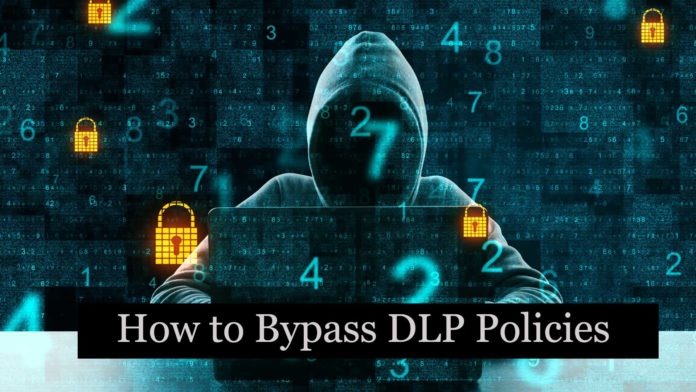Data Loss Prevention (DLP) systems are designed to prevent the unauthorized disclosure or leakage of sensitive information from an organization. However, like any security measure, DLP solutions are not foolproof, and attackers may attempt to bypass them. Below are some common DLP bypass techniques and corresponding defense strategies:
DLP Bypass Techniques:
- Encryption:
- Technique: Attackers may encrypt sensitive data before exfiltration to evade DLP detection.
- Defense: Employ content inspection that can detect encrypted data patterns or use endpoint protection solutions that monitor encryption activities.
- Compression:
- Technique: Compressing sensitive files before transmission can help evade DLP detection.
- Defense: Implement DLP solutions that can analyze compressed files or enforce policies on file types, regardless of compression.
- Steganography:
- Technique: Hiding sensitive data within seemingly innocuous files or images.
- Defense: Use DLP solutions that can analyze content for anomalies or employ network-based intrusion detection systems (NIDS) capable of detecting steganographic techniques.
- Protocol Manipulation:
- Technique: Bypass DLP by using non-standard or encrypted communication protocols.
- Defense: Regularly update DLP policies to account for new communication protocols, and use network monitoring tools to identify unusual traffic patterns.
- Fragmentation:
- Technique: Breaking up sensitive data into smaller fragments for transmission.
- Defense: Implement DLP solutions that can reconstruct fragmented data or monitor for suspicious patterns in data transmission.
- Use of Alternate Channels:
- Technique: Exfiltrating data through channels not monitored by DLP, such as personal email or cloud services.
- Defense: Extend DLP coverage to include commonly used external channels and enforce policies on both corporate and personal devices.
General Defense Strategies:
- Behavioral Analysis:
- Implement behavioral analytics to detect abnormal patterns in user behavior that may indicate data exfiltration.
- User Education:
- Train employees on the importance of protecting sensitive information and the risks associated with attempting to bypass security measures.
- Data Discovery and Classification:
- Regularly update and refine data discovery and classification policies to ensure that sensitive data is properly identified.
- Endpoint Protection:
- Use advanced endpoint protection solutions that can monitor and control data flow on individual devices.
- Regular Audits:
- Conduct regular audits of DLP policies and rule sets to ensure they are up to date with the latest threats and organizational changes.
- Network Segmentation:
- Implement network segmentation to restrict access to sensitive data and limit lateral movement in the event of a security breach.
- Incident Response Planning:
- Develop and regularly test incident response plans to ensure a swift and effective response in the event of a DLP bypass or data breach.
It’s important to note that DLP is most effective when implemented as part of a comprehensive cybersecurity strategy that includes multiple layers of defense. Regularly updating policies, staying informed about new threats, and maintaining a proactive security posture are key elements of effective DLP defense.
To Perform DLP Policy audit contact [email protected]



































